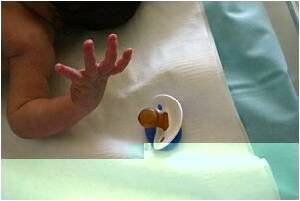Reducing the risk of infection is the key to treating hydrocephalus. Shunting and pressure reduction in the brain are the two ways to treat hydrocephalus.

‘The increased pressure in the brain can prevent the brain from developing, leading to cognitive impairment or death. So reducing the pressure improved brain growth in infants and in some cases reached normal growth ranges.’





Unfortunately, in Uganda, where the trial took place at CURE Children's Hospital of Uganda, it can take days for the rural poor to get back to the hospital. While shunts can fail throughout a patient's lifetime, typically, the endoscopic approach tends to fail during the first six months after surgery, and failure is less dangerous, according to Schiff.
Hydrocephalus
In hydrocephalus, cerebrospinal fluid builds up inside the skull and increases pressure on the brain. In infants, whose head bones are not yet fused, hydrocephalus can enlarge and deform the shape of the skull. The increased pressure can prevent the brain from developing, leading to cognitive impairment or death. The standard procedure to treat hydrocephalus has been surgical implantation of a shunt.
"There are lots of reasons why we don't want to put a shunt in," said Schiff, who is also the director of the Penn State Center for Neural Engineering. "With a shunt the fluid over drains, but without a shunt, there is more fluid. We needed to find out if the children do as well if there is more fluid in the brain."
Advertisement
A total of 100 infants were enrolled in the trial with 51 randomly assigned to endoscopic surgery and 49 randomly assigned to receive a shunt. The researchers used the Bayley Scale of Infant Development cognitive scale to score the infants at 12 months.
Advertisement
When Benjamin C. Warf, professor of neurosurgery, Harvard Medical School and one of the three first authors on this paper looked at the five-year follow-up in a previous study, he saw that one-third of the children had died, which is twice the typical 16 percent mortality rate in Uganda. He also found that one-third of the children were quite disadvantaged, but one-third fell in the normal range. Abhaya V. Kulkarni, professor of neurosurgery, University of Toronto, is the also first author on this paper.
The current trial found that children in the normal range had more normal brain development. To determine normal development, the research team used CT scans. However, in order to categorize the infant's brains, the scientists needed growth curves of normal infant brain development.
The researchers found that the mechanical pressure on the brain acted as a sort of growth dampener. Higher pressures caused the brain to slow its growth, but when the pressure was lowered, brain growth sped up and in some cases reached normal growth ranges.
"It looks like we stumbled onto an effect of mechanical pressure on growth," said Schiff. "We know that to get the best outcome we want to grow the best brain."
The research team would now like to automate the analysis of CT and MRI imaging to make it easier to monitor the growth of the brain of such children.
"Ultimately the answer for hydrocephalus will be in prevention," said Schiff. "Until we can get rid of these infections - we think there are about 400,000 cases per year worldwide and up to half may be caused by infection - surgical approaches are the only answer."
Source-Eurekalert









